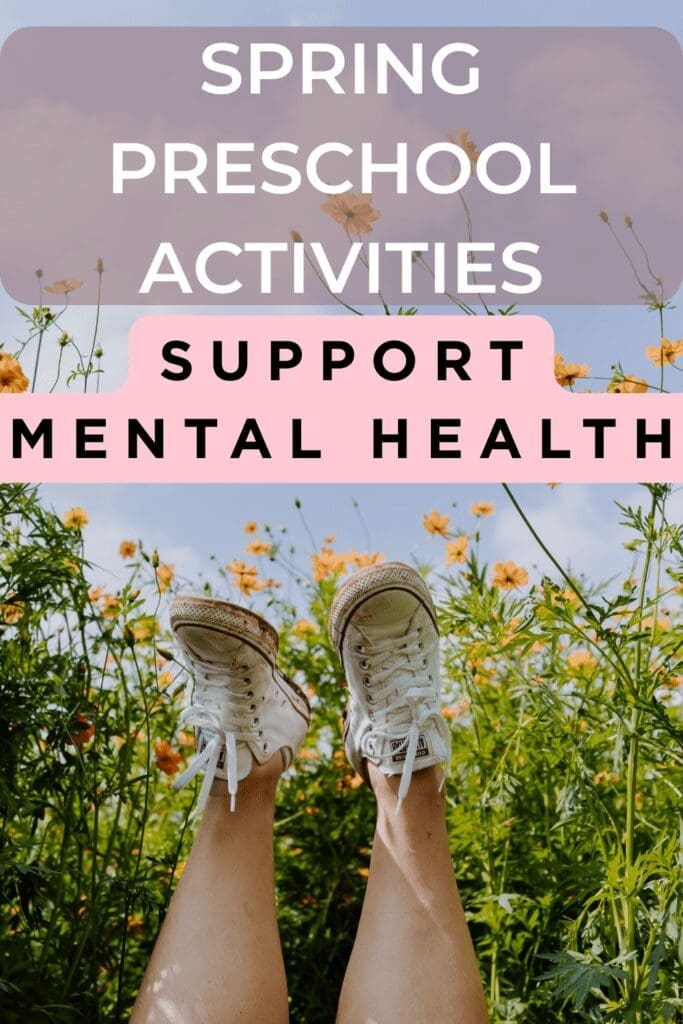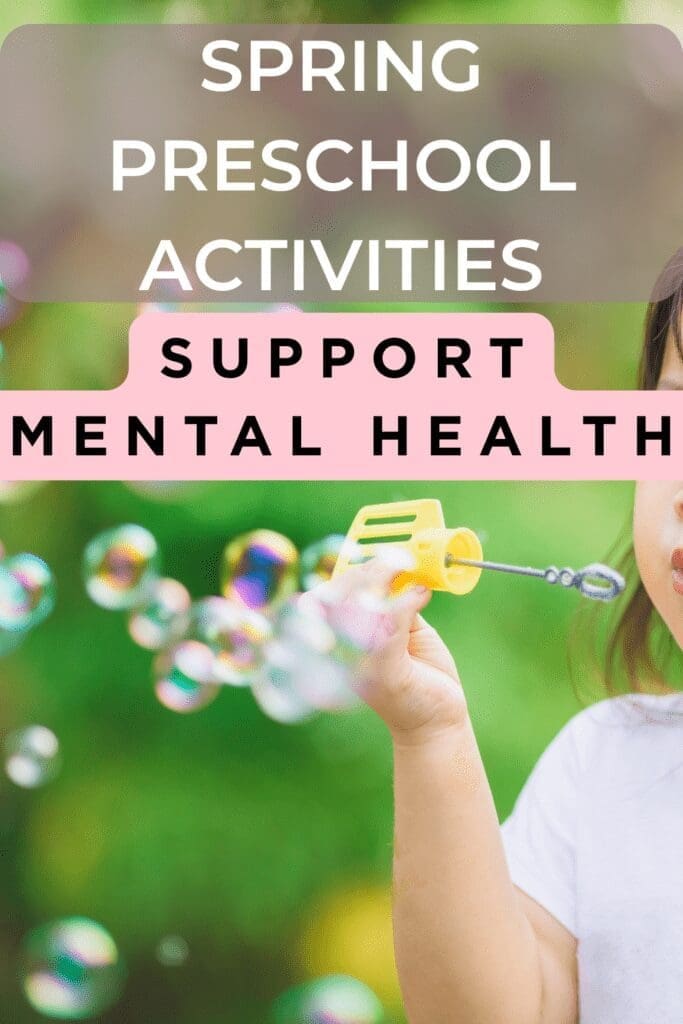Spring is the perfect season to nurture mental wellness in young children. With its fresh air, blooming flowers, and sensory-rich environment, spring provides countless opportunities for emotional growth and connection. In this article, we’ll explore 10 spring-themed preschool activities designed to support emotional regulation, mindfulness, and social-emotional learning. These activities are simple, fun, and rooted in mental health practices suitable for little learners.

🌸 1. Nature Walk & Emotion Hunt
What it is:
Take your preschoolers on a nature walk through a garden, park, or even around the schoolyard. As they explore, ask them to find objects that represent different emotions. For example, a soft petal might represent calm, a crunchy leaf might symbolize frustration, or a bright flower could stand for happiness.
Mental Health Benefit:
This activity promotes emotional awareness and helps children build connections between physical sensations and emotional states. It also encourages mindfulness as they observe and reflect on nature.
How to Do It:
- Bring a chart or visual card with different emotions illustrated.
- Prompt the kids to choose objects that match how they feel or imagine someone else might feel.
- After the walk, gather for a circle time discussion about their finds and the emotions they associate with them.
🌈 2. Rainbow Breathing with Chalk
What it is:
Using sidewalk chalk, draw a large rainbow on the ground. Teach children to trace each arc with their finger while practicing deep breathing. Inhale going up the arc, exhale going down.
Mental Health Benefit:
Breathwork helps children self-regulate, reduce anxiety, and improve focus. Combining it with the visual and tactile experience of chalk enhances engagement.
How to Do It:
- Draw a big rainbow with several colored arcs.
- Demonstrate how to slowly trace each line with a finger while inhaling and exhaling.
- Turn it into a calming ritual before transitions or after high-energy activities.
🦞 3. Bug Observation & “Feelings in a Jar”
What it is:
Let children observe bugs in the yard or garden, then transition to making a sensory “feelings jar” using glitter, water, and small spring-themed items (like flower beads or paper butterflies).
Mental Health Benefit:
This activity builds emotional insight through metaphor—when shaken, the jar can represent a busy or overwhelmed mind, and as the glitter settles, so does the emotion.
How to Do It:
- Go bug-watching with magnifying glasses.
- Talk about how bugs might feel (e.g., busy like a bee, slow like a snail).
- Use a plastic jar or bottle to add water, glitter, and small objects.
- Shake the jar and watch as everything settles—use it as a tool to calm down.
🌷 4. Plant a “Feelings Garden”
What it is:
Create a small indoor or outdoor garden where each plant represents an emotion. For instance, a tall sunflower could symbolize confidence, and lavender might represent calm.
Mental Health Benefit:
This activity fosters emotional labeling and nurtures empathy as children care for their “feeling” plants over time.
How to Do It:
- Let each child choose a plant and assign it a feeling.
- Decorate plant labels with the emotion name and face.
- Water and observe the plants daily, discussing how they’re growing and what that emotion feels like in real life.
🐣 5. Spring Animal Yoga
What it is:
Practice playful yoga poses inspired by spring animals. Examples include Bunny Hops (squat and jump), Frog Pose (deep squat), and Butterfly Wings (seated with feet together).
Mental Health Benefit:
Yoga helps children manage energy, develop body awareness, and relax their nervous system.
How to Do It:
- Create a short routine with 4-6 poses.
- Use storytime to narrate a journey through spring using these animal moves.
- Encourage deep breathing during each pose.
☁️ 6. Cloud Watching & Emotion Stories
What it is:
Lie on a blanket under the sky and look for different shapes in the clouds. Invite children to describe what they see and create short stories about how the cloud characters might feel.
Mental Health Benefit:
Combines calm observation with emotional storytelling and imagination, supporting creativity and empathy.
How to Do It:
- Choose a warm, dry day for outdoor relaxation.
- Bring blankets and lie down in a grassy area.
- Prompt storytelling: “That cloud looks like a turtle. How do you think the turtle feels today?”
🎨 7. Nature Mandalas with Kindness Intentions
What it is:
Use found objects in nature like petals, twigs, and stones to create circular mandalas. As each layer is added, children can say something kind about themselves or others.
Mental Health Benefit:
Promotes mindfulness, gratitude, and focuses attention on positive, self-affirming thoughts.
How to Do It:
- Collect materials on a nature walk.
- Start with a stone or flower center.
- Add layers outward, saying kind phrases like “I am a good friend” or “I love helping others.”
🧼 8. Spring Feelings Picnic
What it is:
Host a pretend or real picnic where each item on the menu is named after an emotion or a positive trait—like “Joyful Juice,” “Kindness Cookies,” or “Courage Carrots.”
Mental Health Benefit:
Creates a playful, safe space to talk about feelings and encourages emotional language.
How to Do It:
- Involve the children in naming and preparing snacks.
- Create a picnic setup inside or outside.
- Go around the circle and share a time they felt the feeling named on their snack.
🐦 9. Bird Song Listening & Drawing
What it is:
Sit quietly and listen for birdsong, then give children paper to draw how the bird sounds make them feel.
Mental Health Benefit:
Encourages stillness, auditory focus, and emotional expression through art.
How to Do It:
- Go outside or open windows on a spring morning.
- Ask children to close their eyes and listen.
- Afterward, let them use colors and shapes to express their emotions in drawings.
🌻 10. Gratitude Garden Wall
What it is:
Create a bulletin board or wall mural where kids can “plant” paper flowers, each with something they’re thankful for written on the petals.
Mental Health Benefit:
Practicing gratitude increases positive thinking and emotional resilience.
How to Do It:
- Cut out large paper flowers in spring colors.
- Ask kids to draw or write what they’re grateful for.
- Add the flowers to a designated wall space to build a collaborative gratitude garden.

These spring activities are more than seasonal fun—they are thoughtful, developmentally appropriate tools that help preschoolers build emotional intelligence, practice mindfulness, and deepen their connection to the natural world. With just a few simple materials and a bit of creativity, you can turn springtime into a powerful season of mental wellness for young learners.

About the Author
Hi, I’m Eve, a former school counselor with a master’s degree in School Psychology and a passionate advocate for children and families navigating sensory challenges. As a mom of children with sensory sensitivities, I deeply understand the journey special-needs parents face, and I dedicate myself to researching and sharing practical solutions to help children thrive and feel comfortable in their bodies. My goal is also to empower counselors, therapists, and psychologists with creative strategies and supportive resources to enrich their everyday practice. When I’m not writing or exploring new therapeutic approaches, you’ll find me spending quality time with my family and continually seeking inspiration from everyday moments.


